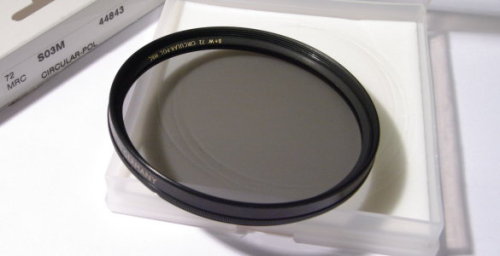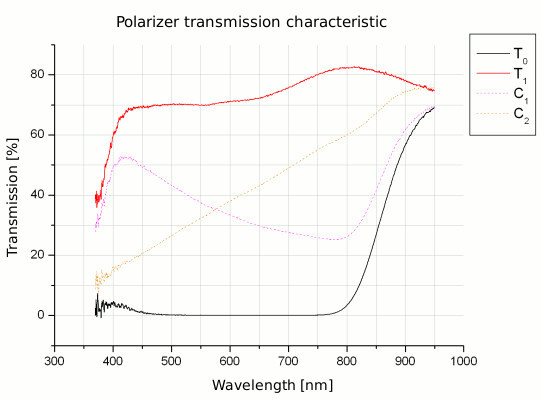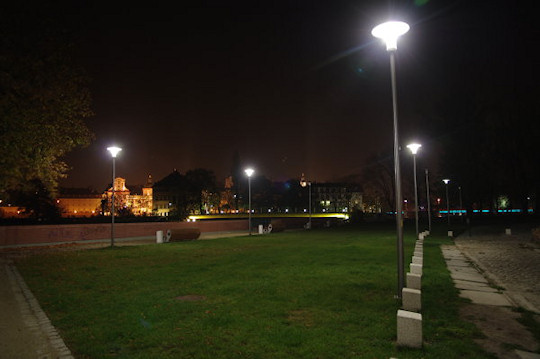Polarizing filters test
5. B+W C-POL MRC 72 mm
 |
||
 |
||
B+W filters are manufactured by German Schneider Optics and definitely don’t belong to the cheapest ones. They’re covered by hard, thin MRC coatings which protect them against scratches. The respect of photographers, that these filters have, should go hand in hand with the highest quality. Is it so?
Results of the test

- - - - - - - - - - - - - - - - - - - - - - - - - - - - - - - - - - - - - - - - - - - - - - - -
Red color extinction coefficient: 1,03E-3 - Score: 2/4
Green color extinction coefficient: 1,01E-3 - Score: 2/4 Blue color extinction coefficient: 2,85E-2 - Score: 0.5/4 Mean transmission of the whole spectrum: 35.37% - Score: 2.07/3 Score:
|
|
||

With filter Score:
|
|
||

Luminance: 16.3
Score:
|
|
||
| Edge darkening 2.7% Score: |
|
||

Without reservation
Score:
|
|
||
|
|||
Usage
There were no major problems with this filter during the tests. The ring turns with unequal resistance, quite hard. This resistance may turn out to be large if the filter is used at low temperatures and we turn it through a small lens hood window.
Summary
6th place in the overall rankingIt’s worth to notice that the first six stays at an even, high level. The transmission curve is flat in the majority of visible spectrum. Better transmission of red color may slightly warm the pictures. The extinction coefficient of around 1/1000 is a typical result of modern foil polarizers. Just like with competition stops working (becomes transparent) in infrared. Decent polarization transmission parallel to the polarizer’s azimuth (red line) paid with a few percentage of blue color transmission, which should be extinguished (black line). C1 and C2 graphs raise no concerns, we’re dealing with a quarter-wave plate of zeroth order designed for the middle of visible spectrum.
Filter for tests was lent by Pstryk.pl







